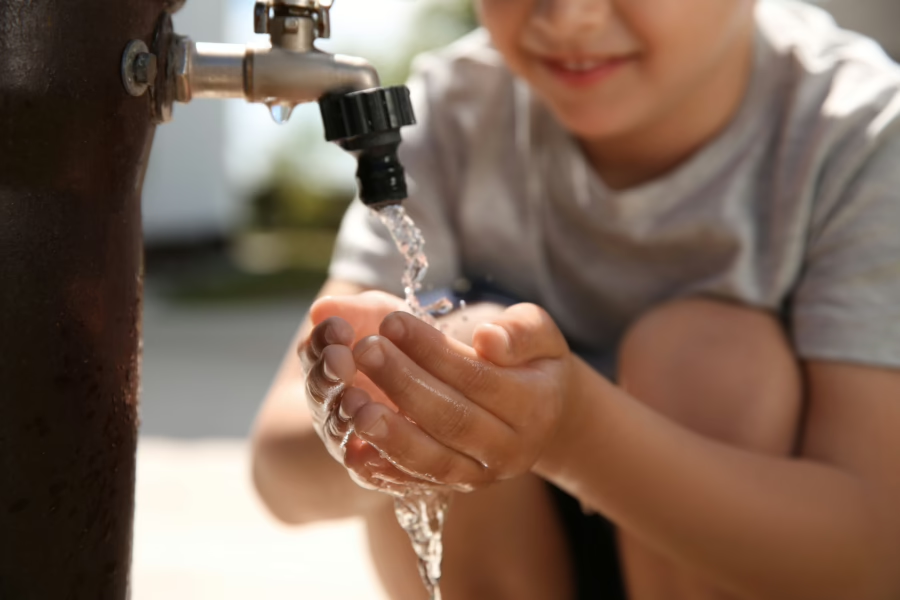This week, nearly 700 organizations across the country will participate in Imagine a Day Without Water, a national day of education and awareness about the value of water and the important role of water and wastewater infrastructure. Millions of Americans will try to imagine a day without water to brush their teeth, bathe their children, grow their produce, or make their coffee. Meanwhile, millions living in Puerto Rico don’t have to imagine a day without water. They are living it; and have been for weeks.
After being hit by Hurricane Irma, which knocked out much of the US territory’s electricity, Puerto Rican homes, businesses, and essential infrastructure were catastrophically destroyed by Hurricane Maria only days later. Less than three weeks since Hurricane Maria, the island faces a humanitarian crisis. According to FEMA, just 63 percent of the island’s residents have access to clean drinking water (up from nearly 50 percent three weeks ago).
Natural disasters—from hurricanes to flooding to wildfires—bring to light the vulnerabilities of our water and wastewater systems and the harsh reality of what it means to live without them.
Living Without Water
In the aftermath of Hurricane Maria, many in Puerto Rico collect water from mountain streams, or in desperate cases, from roadside crevasses. They bathe in tiny creeks. Grocery stores ration the few remaining stocks of bottled water. Some anxiously await the next delivery of supplies; that is if they can be reached by relief workers. Only 60 percent of wastewater treatment plants are working, leaving many vulnerable to waterborne diseases, water contamination, and catastrophic living conditions, especially in areas that have been isolated due to the storm’s impacts.
No Power, No Water, No Transportation
The crisis in Puerto Rico demonstrates the interdependent nature of our infrastructure. With the collapse of the power grid, there was no energy to pump, treat, or transport clean drinking water or remove wastewater from communities. On a localized level, alternative infrastructure—ground wells and other plumbing systems—suffered extensive damage. Earlier this year, when the Oroville Dam in California was susceptible to failure, hundreds of thousands fled the area to safety. In Puerto Rico, this was not an option, as destroyed roads and highways limited people’s mobility making them vulnerable to the failure of the Guajataca Dam.
The Need for a Resilient Water Workforce
Our resiliency is more than just shoring up the pipes, pumps, and plants that make up our water and wastewater infrastructure, it’s also the people that run it. After Hurricane Maria, Puerto Rico lacked enough trained technicians to assess the damage to the water and wastewater infrastructure, further exacerbating the water infrastructure challenge. This does not come as a surprise given the water industry in the US faces a significant workforce challenge as a nearly one-third of mission-critical workers become eligible for retirement. Puerto Rico is just one example of the need to train the next generation of engineers and operators to address the infrastructure challenges of the day and protect our communities.
No community should have to imagine a day without water or wastewater service, much less live it. The reality is, all it takes is one natural disaster to turn Imagine a Day Without Water from a hypothetical public awareness campaign into a reality. We already under-invest in our water infrastructure systems. Now is the time to reinvest in our water systems, to strengthen them, and make them more resilient for not only for the future, but for today. To do that, it’s going to take us all. It’s going to take government officials at every level committing to making water a priority. It’s going to take best in class research and science. And it’s going to take community-driven planning and engagement in infrastructure solutions.
For Puerto Rico, aid is vital and the road to recovery is imminent. But it’s not the only thing we can do. As a nation, we cannot let the story of Puerto Rico fade after water service is restored and the island begins to rebuild. We cannot forget the images of our fellow Americans siphoning muddy water from a hillside or community roads becoming latrines. If we truly value water, we will continue to keep the conversation going about the importance of water infrastructure to the safety and resiliency of our nation, especially those of us state-side with the power to call on our elected representatives and demand more.
—
If you are inspired to make Imagine a Day Without Water a true day of action, here are some ways you can help Puerto Ricans. You can find national and international relief organizations and local organizations that are accepting supply donations online.
- Host a supply drive.
- Encourage cash donations.
- Call on your elected officials to take action.
- Share real life stories of the conditions in Puerto Rico and keep the conversation going.


